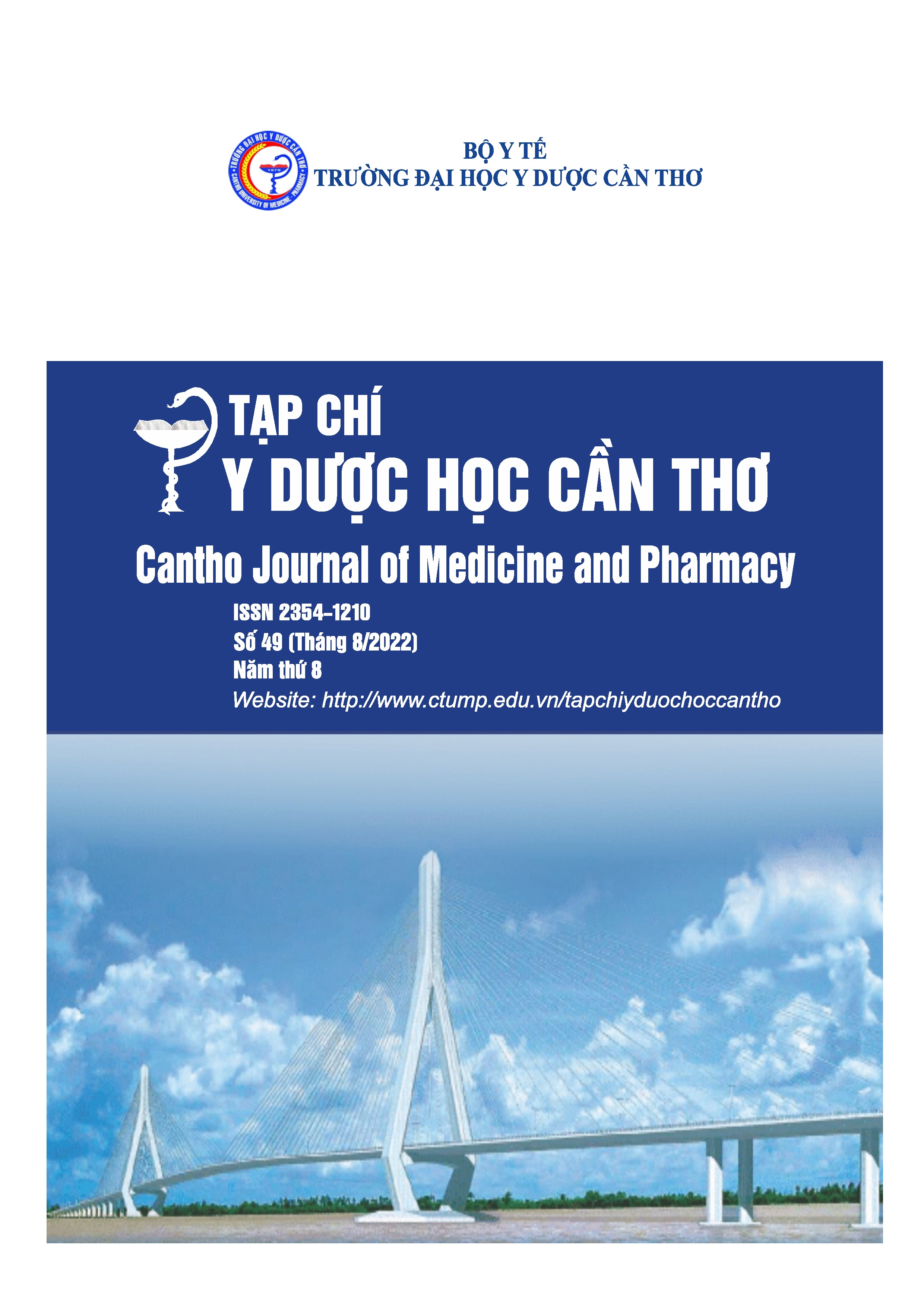STUDY ON HEART FAILURE WITH PRESERVED EJECTION FRACTION IN TYPE 2 DIABETIC PATIENTS WITH HYPERTENSION AT CAN THO CENTRAL GENERAL HOSPITAL IN 2021-2022
Main Article Content
Abstract
Background: Heart failure with preserved ejection fraction accounts for 50% of heart failure patients, severely affecting patients' lives. Type 2 diabete with hypertension increase the risk of developing heart failure by 3-5 times. Objectives: To determine the prevalence of heart failure with preserved ejection fraction and some related factors in patients with type 2 diabetes with hypertension at Can Tho Central General Hospital from April 2021 to April 2022. Materials and methods: A cross-sectional descriptive study was conducted on 99 patients with type 2 diabetes with hypertension at the Can Tho Central General Hospital from April 2021 to April 2022. Results: The proportion of patients with type 2 diabetes with hypertension which had heart failure with preserved ejection fraction was 44.4%, women accounted for a higher proportion than men (64.7% compared with 35.3%). Patients with heart failure with preserved ejection fraction had a mean age of 70.8 ± 10.6; the majority of the population is older patients (81.8%). There were correlation between obesity, ischemic heart disease with heart failure with preserved ejection fraction (OR:1.65;2.83, respectively; p<0.05). Duration of time to detect diabetes over 10 years is also related to the frequency of heart failure with preserved ejection fraction (OR:5.58; p<0.05). Similarly, morphology (left atrial dilatation) and/or impaired left ventricular diastolic function on Doppler echocardiography,myocardial tissue Doppler echocardiography are also related factors (OR:3.2;6.3 ;respectively; p<0.05). Conclusion: Heart failure with preserved ejection fraction is common in patients with type 2 diabetes with hypertension accounting for 44.4%. Cardiovascular risk factors, comorbidities such as obesity, ischemic heart disease are related factors. Duration of time to detect diabetes over 10 years increases the risk of developing heart failure with preserved ejection fraction 5.58 times.
Article Details
Keywords
Type 2 diabetes, hypertension, heart failure with preserved ejection fraction
References
2. Liêu Trường Khánh (2017), “Nghiên cứu đặc điểm lâm sàng, cận lâm sàng, tỷ lệ rối loạn chức năng tâm trương thất trái ở bệnh nhân đái tháo đường típ 2 tại Bệnh viện Đa khoa Trung ương Cần Thơ”, Luận văn Thạc sĩ Y học, Trường Đại học Y Dược Cần Thơ.
3. Trần Thị Trúc Linh (2016), “Nghiên cứu mối liên quan giữa biểu hiện tim với mục tiêu theo khuyến cáo ESC- EASD ở bệnh nhân đái tháo đường típ 2 có tăng huyết áp”, Luận án tiến sĩ y học, Trường Đại học Y Dược Huế.
4. Nguyễn Quang Tuấn (2019), “Điều trị tăng huyết áp ở bệnh nhân có bệnh lý đi kèm”, Tiếp cận toàn diện về chẩn đoán và điều trị tăng huyết áp, Nhà xuất bản y học Hà Nội, tr.139-141.
5. American Diabetes Association (2021), “Standards of Medical Care in Diabetes - Abridged for primary Care Providers”, Clin Diabetes, 36(1), pp.14-37.
6. Berezin AA, Fushtey IM, Berezin AE (2022), “Discriminative Utility of Apelin-to-NT-ProBrain Natriuretic Peptide Ratio for Heart Failure with Preserved Ejection Fraction among Type 2 Diabetes Mellitus Patients”, Journal of Cardiovascular Development and Disease, 9, pp.23.
7. ESC Guidelines on diabetes, pre-diabetes and cardiovascular diseases developed in collaboration with the EASD (2019), European Heart Journal, 41,pp.255-323.
8. ESC Guidelines for the diagnosis and treatment of acute and chronic heart failure (2021), European Heart Journal, 41, pp.32-33.
9. Jap J, Tay WT, MAppStat, Et al (2019), “Association of Diabetes Mellitus on Cardiac Remodeling, Quality of life, and Clinical outcomes in Heart failure with reduced and preserved ejection fraction”, Journal of the American Heart Association, 8, pp.e013114.
10. Lejeune S, Roy C, Slimani A, et al. (2021), “Diabetic phenotype and prognosis of patients with heart failure and preserved ejection fraction in a real life cohort”, Cardiovas Diabetrol, 2(1), pp.1242-1245.
11. McHugh K, Adam D, DeVore (2019), “Heart failure and preserved ejection fraction and Diabetes”, Journal of the American college of cardiology, 73(5), pp.602-611.
12. Mochizuki Y, Tanaka H, Matsumoto K, et al. (2015), “Clinical features of subclinical left ventricular systolic dysfunction in patients with diabetes mellitus”, Cardiovascular Diabetology, 14(37), pp.0201-0208.


